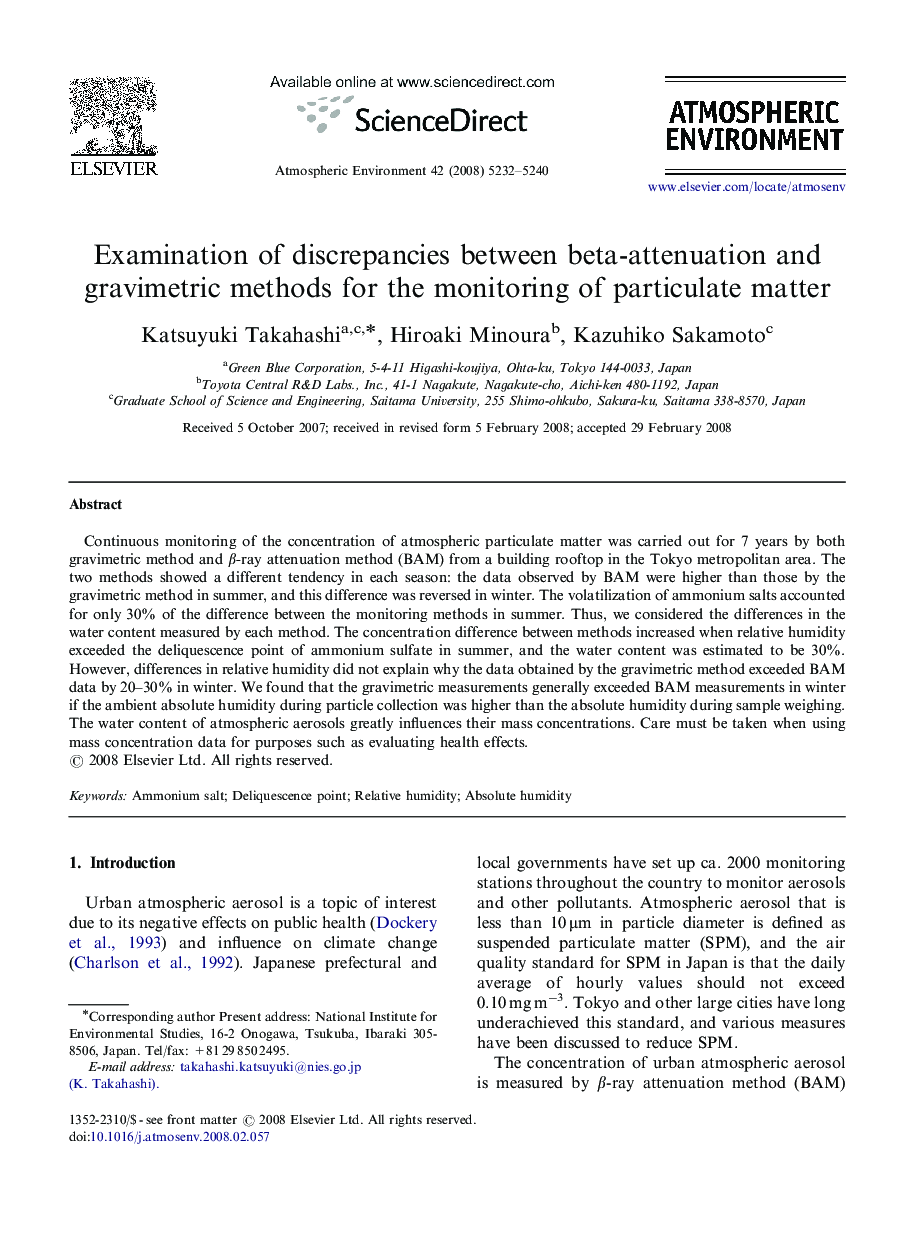| Article ID | Journal | Published Year | Pages | File Type |
|---|---|---|---|---|
| 4442729 | Atmospheric Environment | 2008 | 9 Pages |
Continuous monitoring of the concentration of atmospheric particulate matter was carried out for 7 years by both gravimetric method and β-ray attenuation method (BAM) from a building rooftop in the Tokyo metropolitan area. The two methods showed a different tendency in each season: the data observed by BAM were higher than those by the gravimetric method in summer, and this difference was reversed in winter. The volatilization of ammonium salts accounted for only 30% of the difference between the monitoring methods in summer. Thus, we considered the differences in the water content measured by each method. The concentration difference between methods increased when relative humidity exceeded the deliquescence point of ammonium sulfate in summer, and the water content was estimated to be 30%. However, differences in relative humidity did not explain why the data obtained by the gravimetric method exceeded BAM data by 20–30% in winter. We found that the gravimetric measurements generally exceeded BAM measurements in winter if the ambient absolute humidity during particle collection was higher than the absolute humidity during sample weighing. The water content of atmospheric aerosols greatly influences their mass concentrations. Care must be taken when using mass concentration data for purposes such as evaluating health effects.
